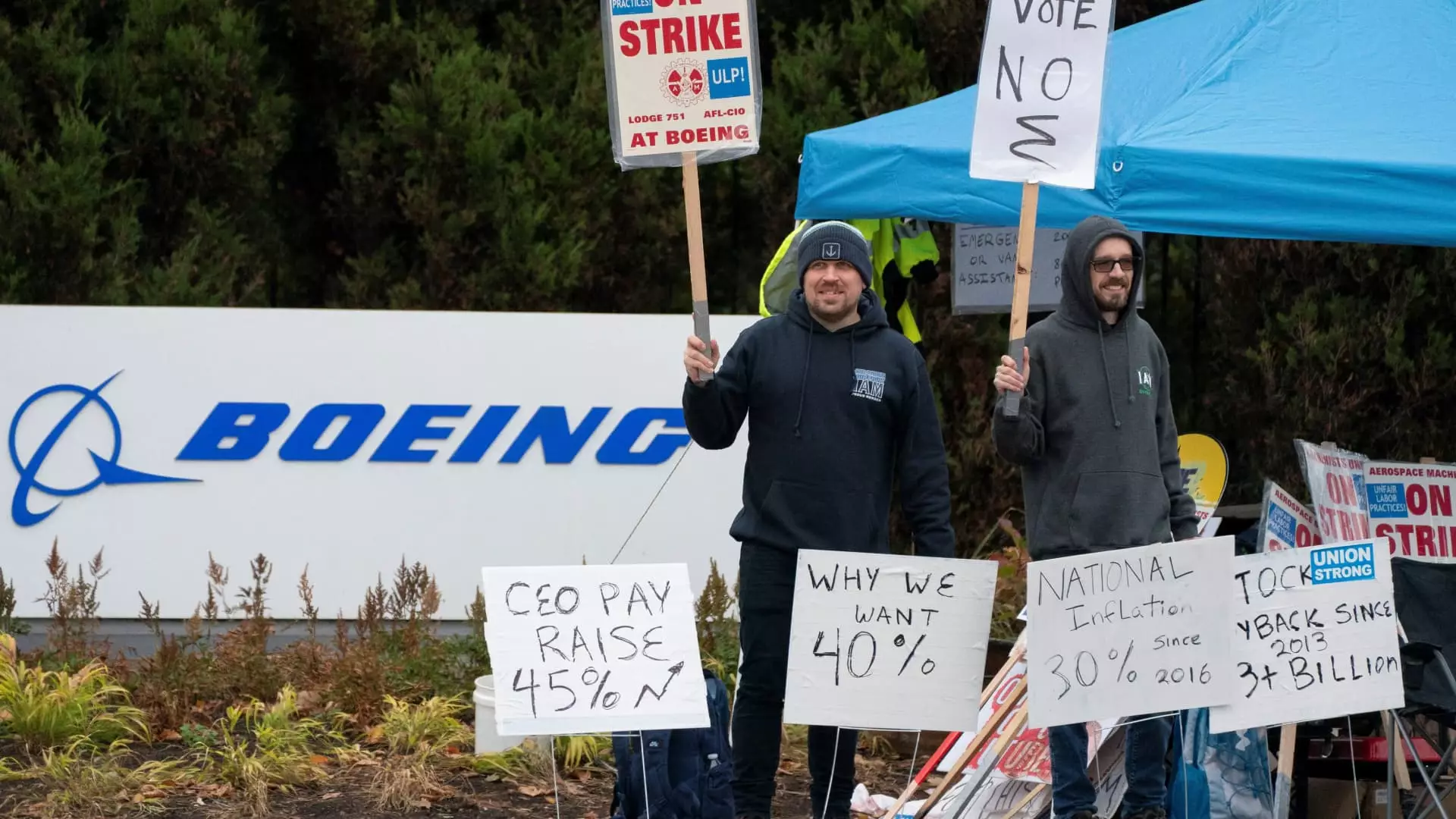After seven weeks of negotiations that culminated in a significant strike, Boeing and the International Association of Machinists and Aerospace Workers District 751 have put forth a new contract proposal aimed at restoring operations and addressing employee concerns. As the strike began on September 13, with over 32,000 machinists ceasing work primarily near Seattle, the importance of reaching an agreement has grown increasingly urgent. The union has indicated that the vote on this latest proposal is set for Monday, and the pressure is mounting for both sides to find common ground.
The newly proposed contract boasts a 38% general wage increase over four years, a slight improvement from an earlier offer of 35%. Moreover, when factoring in compounding raises, this could effectively mean a pay increase nearing 44%. This considerable enhancement in wages is pivotal, especially given how the cost of living in the Seattle area has substantially escalated in recent years. Workers are being promised financial relief not just through enticing salary increases but also through a one-time ratification bonus of $12,000, which could provide immediate financial support to machinists.
The union’s decision to push for a swift resolution is underscored by their belief that the risk of future negotiations yielding less favorable outcomes is high. They wisely argue that prolonging the strike may be counterproductive, asserting that they have already made significant strides. This sentiment reflects a pragmatic approach to labor negotiations in undoubtedly tough economic times for Boeing.
The repercussions of the strike extend far beyond the immediate impacts on Boeing’s production line. With the company being one of the foremost exporters in the United States, the standoff disrupted manufacturing schedules on a grand scale and influenced U.S. employment statistics negatively. The Biden administration’s engagement in negotiations, represented by Acting Labor Secretary Julie Su, shows the increasing economic stakes of the situation. The involvement of federal officials highlights the broader implications of the strike, demonstrating how labor relations in the aerospace sector can ripple through the national economy.
Moreover, the ongoing struggle for fair compensation must be viewed within the context of broader economic dynamics—particularly in tech-heavy regions like Seattle where the presence of giants such as Amazon and Microsoft has driven up living costs. The desire for competitive wages reflects not only the machinists’ current state but also the shifting landscape of labor negotiations as companies strive to attract and retain skilled workers.
One contentious issue underlying the negotiations has been Boeing’s manufacturing decisions, particularly the relocation of the 787 Dreamliner production to a non-union factory in South Carolina. Such moves have incited union frustrations and underscored larger fears over job security and the future of manufacturing in the Puget Sound region. The current contract proposal reassures workers that Boeing is committed to manufacturing its future aircraft in the Seattle area, but lingering doubts remain about its loyalty to its workforce.
Boeing’s leadership faces the daunting task of not just stabilizing production but also restoring trust with employees who have felt marginalized by past decisions. CEO Kelly Ortberg’s communication highlighting the need for unity and the necessity of returning to work presents a tactical acknowledgment of the gravity of the situation, but the effectiveness of such pleas will depend on the outcomes of the forthcoming vote.
As the vote on the new contract proposal approaches, the stakes are high for both Boeing and its workforce. A swift resolution could signal a turning point not only for affected workers but for the company as it grapples with external pressures from competitors and internal crises stemming from production difficulties and safety issues. The proposed agreement has the potential to enhance employee satisfaction while also restoring productivity, a necessary step for Boeing as it aims to recoup losses exceeding $6 billion in recent months.
The upcoming vote represents a crucial opportunity for Boeing to engage constructively with its machinists, offering them fair compensation and signaling a commitment to their future. The outcome will be pivotal, not just for the company’s operational stability but also for redefining the dynamics of labor relations within the aerospace industry moving forward. The world will be watching as these two entities navigate this decisive moment.

